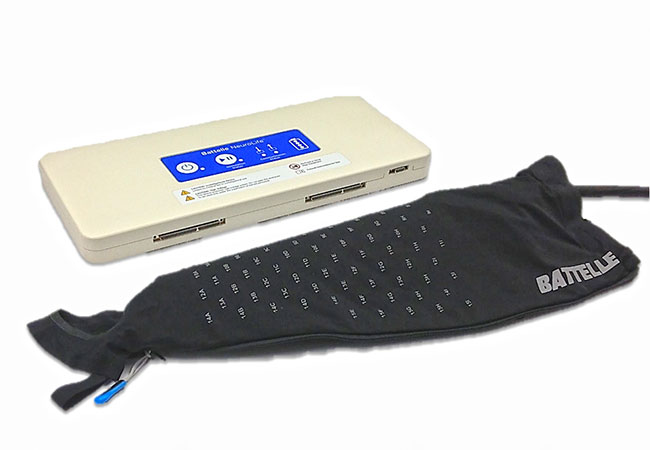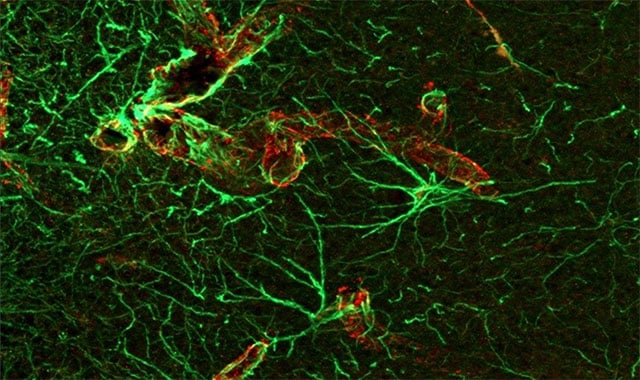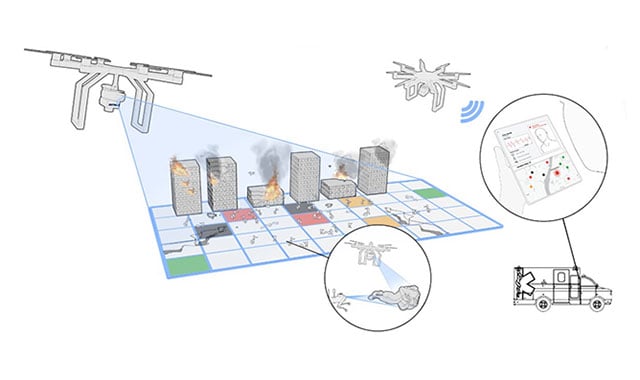Battelle Recruiting Participants to Test NeuroLife® Sleeve

A new, non-treatment research project by the neurotechnology team at Battelle will explore the possibility of returning some hand movement to people who are living with paralysis due to spinal cord injury without the need for invasive surgery.
How the Study is Possible
Thanks to a grant from the Craig H. Neilsen Foundation, scientists and engineers at Battelle, with help from colleagues at the Ohio State University, will test a new specialized sleeve system developed at Battelle. The team’s previous work required a complex and surgically invasive brain-computer interface to control the sleeve. The NeuroLife® sleeve may allow users with paralysis to control Functional Electrical Stimulation (FES), which may have the potential to reanimate a paralyzed limb without invasive surgery.
Who Can Apply?
The new research program is recruiting participants in the greater Central Ohio area who have cervical spinal cord injuries or SCI (criteria). By replacing the brain-computer interface with a non-invasive controller like the NeuroLife® sleeve, the project hopes to enhance independence for individuals who otherwise could not use their hands to complete basic self-care tasks.
Are You A Good Fit for This Study?
“We are building a version of our system geared towards helping more people and on a faster timeline than the brain-computer interface version,” said Battelle Data Scientist and principal investigator David Friedenberg.

Study Details
Participants enrolled into the study will use a combination of buttons with a small screen to select, start and stop various movements on demand. All participants must meet eligibility criteria and provide their informed consent to take part in the study.
The use of the high-definition FES system with simpler, non-invasive control mechanisms is planned to expedite translation of this technology into real-world settings. The objective of the study is to advance personalized, portable, and non-invasive hand-grasp neuro-orthoses that restore naturalistic hand movements. The goals include evaluation of the FES system in the user’s home environment. Participants will use the system with a computer tablet touch screen or from a push button connected to the tablet for various functional hand movements and activities they identify as important to them.
Additional Study Goals
An additional goal of the program is to use the sleeve to record high-resolution surface EMG signals. Battelle researchers and collaborators at the University of Pittsburgh and Imperial College London have recently shown an individual with complete mid-cervical SCI injuries still had residual EMG activity in their paralyzed arms that can be used to decode movement intent in real-time. This could provide sufficient data to justify the significant funding needed for the hardware development and clinical study required to advance a non-invasive EMG-FES product for commercialization and widespread use.
The sleeve and FES-stimulator have been tested extensively in the lab under the supervision of trained technicians. Researchers want to optimize the system for unsupervised home use by soliciting feedback directly from the study participants and their caregivers on their needs and preferences for a FES assistive device.
What's Next?
This program is intended to bring us closer to having a product available to open a new range of freedom for people living with spinal cord injuries.
APPLY FOR THE STUDY
Related Blogs
BATTELLE UPDATES
Receive updates from Battelle for an all-access pass to the incredible work of Battelle researchers.







